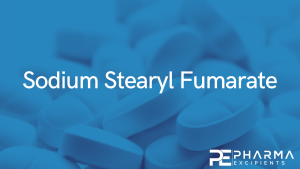Formulating a heat- and shear-labile drug in an amorphous solid dispersion: Balancing drug degradation and crystallinity

We seek to further address the questions posed by Moseson et al. regarding whether any residual crystal level, size, or characteristic is acceptable in an amorphous solid dispersion (ASD) such that its stability, enhanced dissolution, and increased bioavailability are not compromised. To address this highly relevant question, we study an interesting heat- and shear-labile drug in development, LY3009120.
To study the effects of residual crystallinity and degradation in ASDs, we prepared three compositionally identical formulations (57–1, 59–4, and 59–5) using the KinetiSol process under various processing conditions to obtain samples with various levels of crystallinity (2.3%, 0.9%, and 0.1%, respectively) and degradation products (0.74%, 1.97%, and 3.12%, respectively). Samples with less than 1% crystallinity were placed on stability, and we observed no measurable change in the drug’s crystallinity, dissolution profile or purity in the 59–4 and 59–5 formulations over four months of storage under closed conditions at 25 °C and 60% humidity.
For formulations 57–1, 59–4, and 59–5, bioavailability studies in rats reveal a 44-fold, 55-fold, and 62-fold increase in mean AUC, respectively, compared to the physical mixture. This suggests that the presence of some residual crystals after processing can be acceptable and will not change the properties of the ASD over time.
Download the full article as a PDF here or read it here
Materials: Candurin was purchased from EMD Performance Materials (Philadelphia, PA). Copovidone (VA64), a water-soluble copolymer of vinylpyrrolidone and vinyl acetate, was purchased from BASF (Ludwigshafen, Germany). Sodium stearyl fumarate was purchased from JRS Pharma LP (Patterson, NY). HPLC grade methanol, acetonitrile, and trifluoroacetic acid (TFA) were purchased from Fisher Scientific (Pittsburgh, PA). Fasted-state simulated intestinal fluid (FaSSIF) was purchased from Biorelevant.com Ltd. (Surrey, United Kingdom). Sodium chloride, potassium salt, and 1 M HCL were purchased from Fisher Scientific. All other reagents used were of ACS grade or higher.
Article information: Daniel A. Davis, Dave A. Miller, Supawan Santitewagun, J. Axel Zeitler, Yongchao Su, Robert O. Williams, Formulating a heat- and shear-labile drug in an amorphous solid dispersion: Balancing drug degradation and crystallinity, International Journal of Pharmaceutics: X, Volume 3, 2021. https://doi.org/10.1016/j.ijpx.2021.100092.
Read more on Sodium Stearyl Fumarate as a pharmaceutical excipient here:


